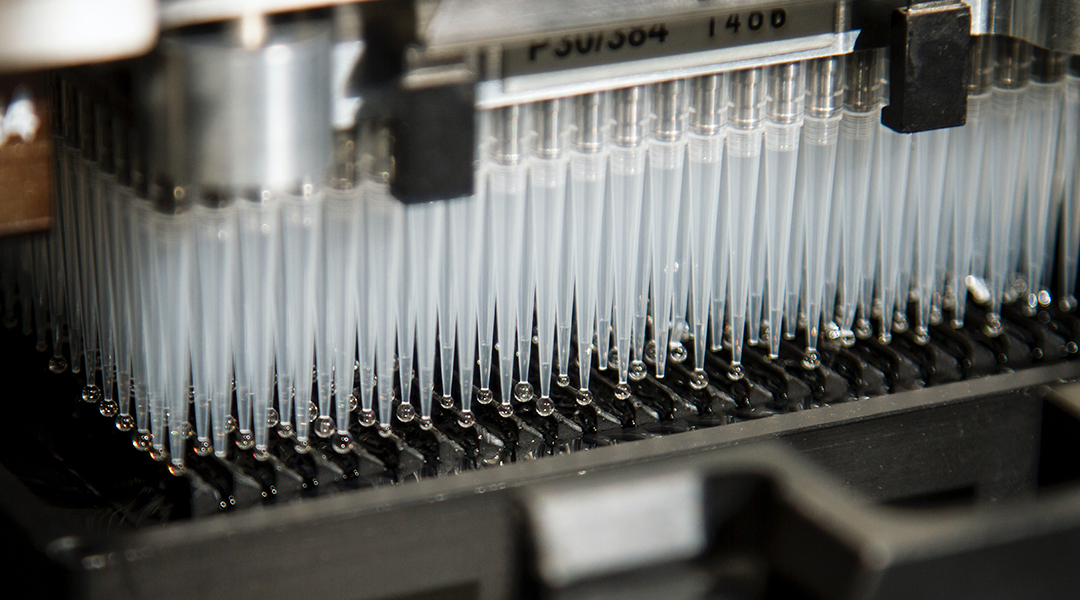mRNA is an essential component to building proteins within a cell. As was demonstrated with the success of mRNA vaccines used during the COVID-19 pandemic, harnessing mRNA as a therapy to manipulate the proteins a cell creates can provide an incredible advantage.
Now, scientists around the world are leveraging mRNA’s potential to develop new therapeutics to treat a number of conditions beyond just vaccines for infectious diseases.
In this vein, a group of scientists recently showed in a study how they created an mRNA therapy with the potential to treat peripheral neuropathy, a common medical condition that often causes pain, weakness, tingling, and numbness, usually in the hands and feet.
“Peripheral neuropathy is the result of peripheral nerve (nerves located outside of the brain and spinal cord) damage,” said Wen Yang, principal investigator at the Shanghai Jiao Tong University School of Medicine in China and lead author of the study.
Peripheral neuropathy can appear as a result of metabolic diseases, such as diabetes, or can be caused by infection or traumatic injury. Additionally, 80-90% of cancer patients that receive chemotherapy develop peripheral neuropathy, leading to treatment reduction, delay, or even discontinuation, which impacts the survival rate. It is of critical importance to find a cure.
“Stimulating neuron regeneration is essential for the reparation of peripheral neuropathy,” said Yang. “Neuron Growth Factor (NGF) is well known for its beneficial effect on neuron regeneration, but its pain-inducing side effect hampered its clinical applications.”Therefore, a different approach needs to be developed, and that is what Yang and the team sought to do.
NGF and its pros and cons
NGF is a protein naturally produced by neurons to promote their survival, extension, and proliferation. But, as Yang mentioned, when applied as a drug, besides helping with those functions, it also produces unwanted pain.
“Reducing the pain-causing side effect but retaining the pro-neuron growth function of NFG is desired for treating peripheral neuropathy,” said Wei Xu, director of the Shanghai Jiao Tong University School of Medicine in China, and co-corresponding author of the study. “A ‘painless’ NGF mutant discovered in hereditary sensory and autonomic neuropathy type V provides a solution for this dogma.”
Some people have a hereditary mutation in their NGF proteins and do not feel pain while having normal neurological and cognitive development. The lack of pain sensation is due to different signaling pathways the mutant NGF protein, called NGFR100W, activates compared to the normal protein.
The team decided to test if the NGFR100W protein could treat peripheral neuropathy, helping the nerves to regrow while avoiding the painful side effects of a normal NGF treatment.
Finding a suitable delivery method for mRNA therapy
One problem the team encountered is that this protein is hard to produce in the lab and rapidly degrades in bodily fluids. Therefore, the scientists decided to develop a system that allows cells in the body to produce the protein themselves.
“The emerging technique of lipid nanoparticles delivering chemically modified mRNA makes using this hard-to-obtain mutant NGF protein possible,” said Yingjie Xu, principal investigator at the Shanghai Jiao Tong University School of Medicine in China and co-corresponding author of the study.
Lipid nanoparticles are molecules that form tiny bubbles that enclose mRNA molecules, allowing a safe delivery to the target cells and extending mRNA half-life within the body, which would be too short without any protection.
The team created the NGFR100W-mRNA in lipid nanoparticles technology to test if the protein kept its nerve-regeneration properties. They evaluated the therapy in a mouse model o see if it could be used by cancer patients with the condition.
After injection, they found the mice showed signs of reduced pain and their nerves were regenerating compared to control mice that received a placebo treatment.
“This technique enables the local expression of functional NGF [mutant] protein at the site of interest to support neuron growth and cure peripheral neuropathy without causing pain,” said Xu. “This technique provides hope in helping patients suffering from peripheral neuropathy caused by chemotherapy or long-term diabetes.”
Xu explained that nerve regeneration is a dynamic process that requires a certain amount of NGF protein over a long period of time, which is why they expect repeated NGFR100W-mRNA administration would be necessary twice a week in patients with peripheral neuropathy.
“To extend the therapeutic activity of NGF, we are working on optimizing the NGF mRNA molecule and the delivery vehicle with controlled release properties for sustained NGF expression,” she added.
Reference: Xiang Yu, et al, Lipid nanoparticle delivery of chemically modified NGFR100W mRNA alleviates peripheral neuropathy, Advanced Healthcare Materials (2022). DOI: 10.1002/adhm.202202127
Feature image credit: National Cancer Institute on Unsplash

















